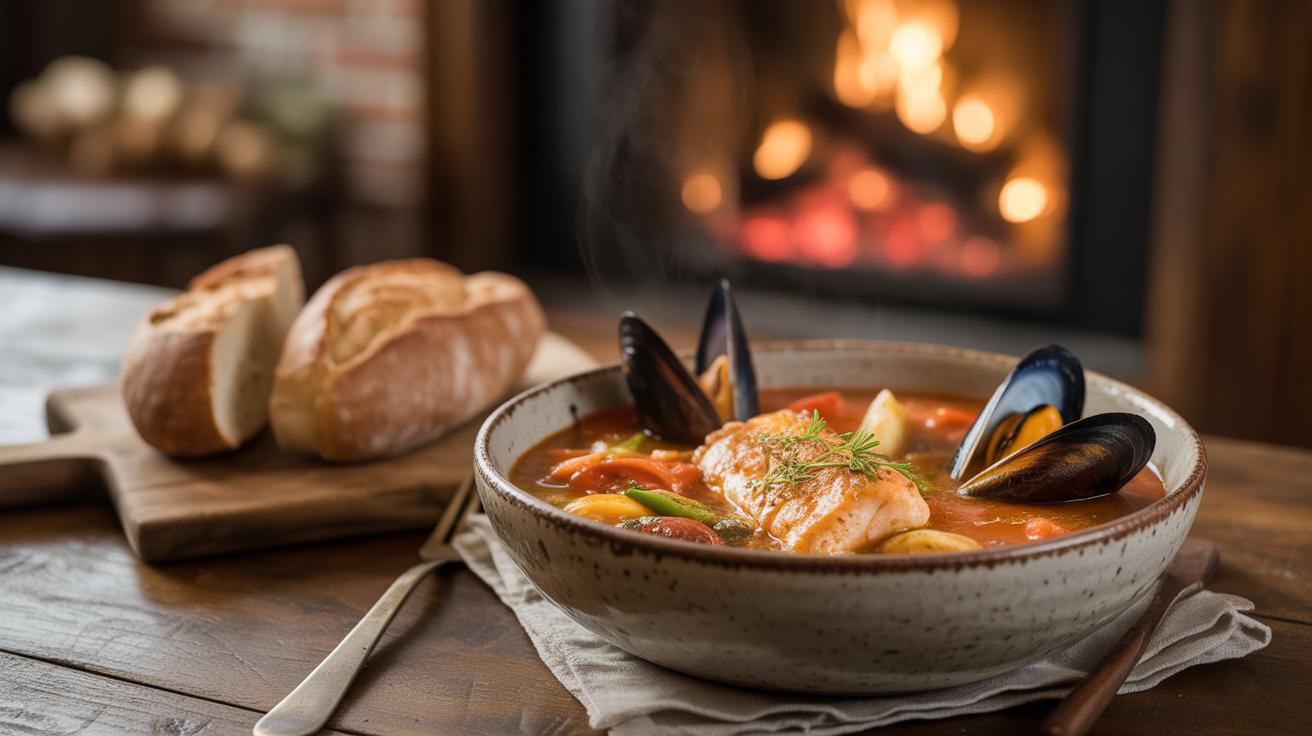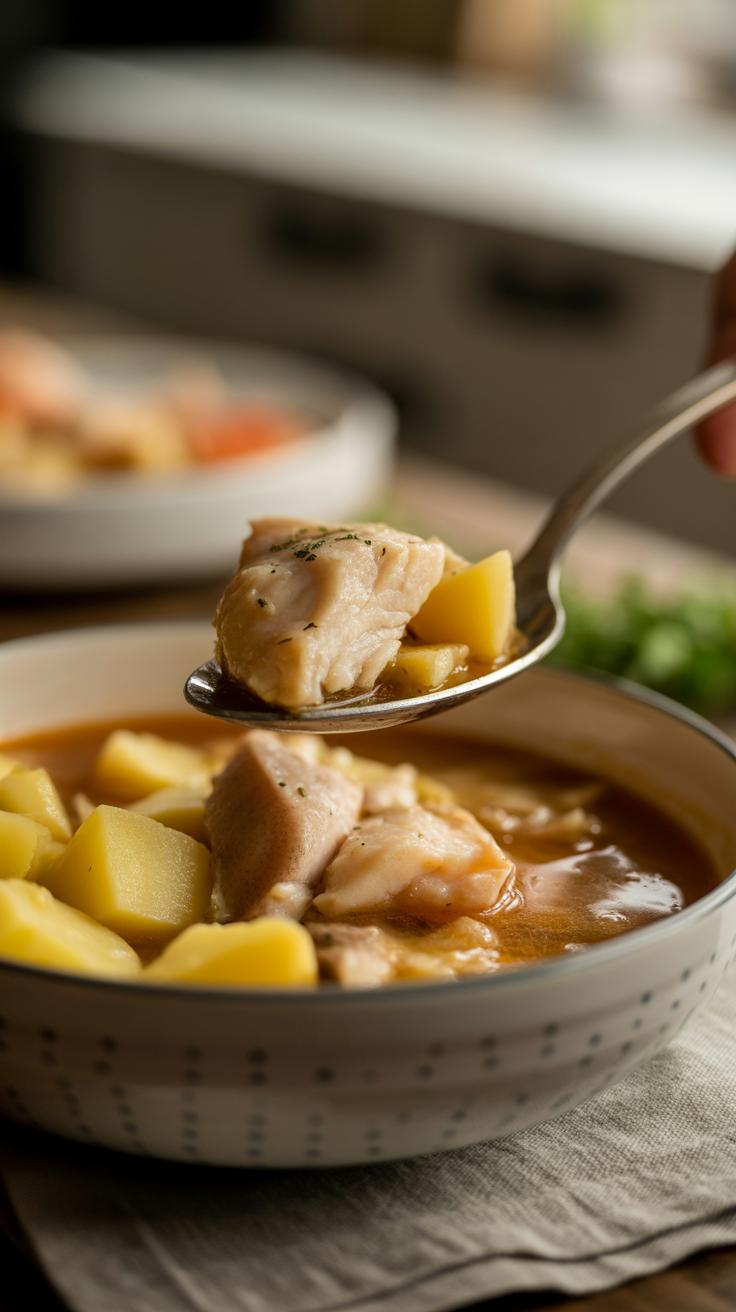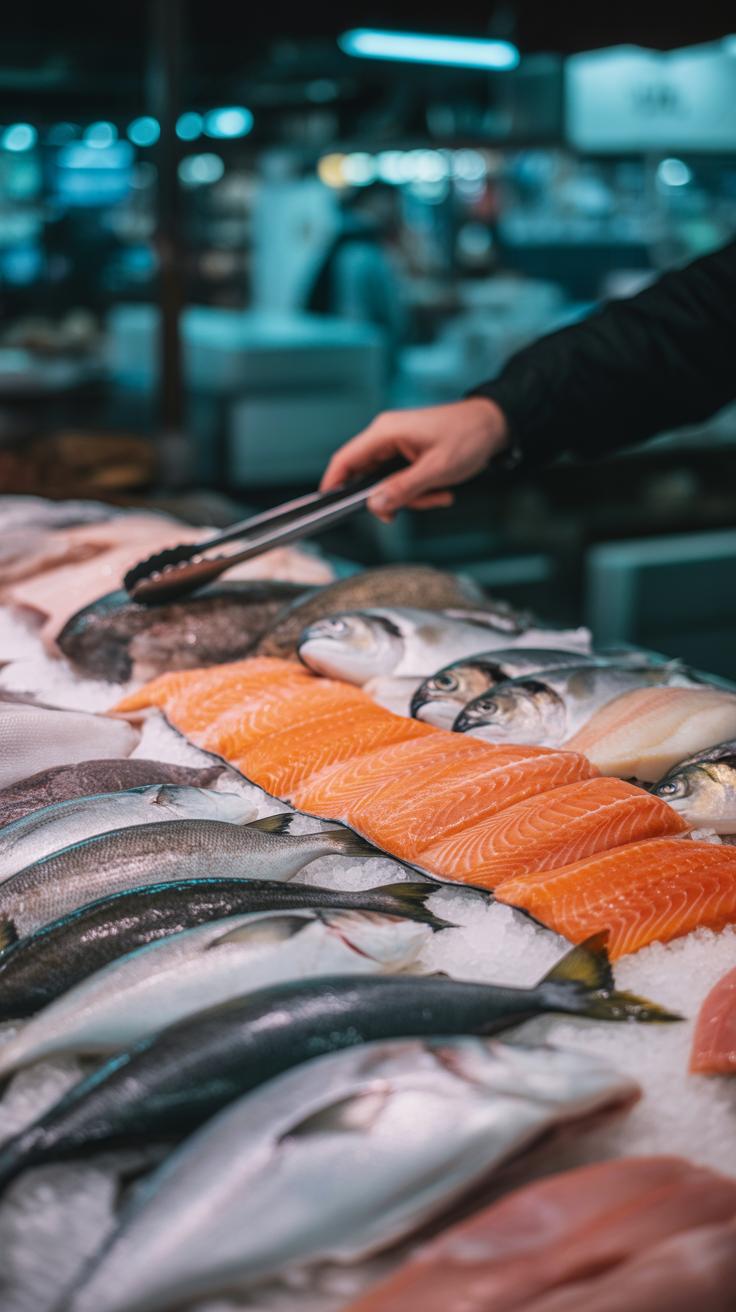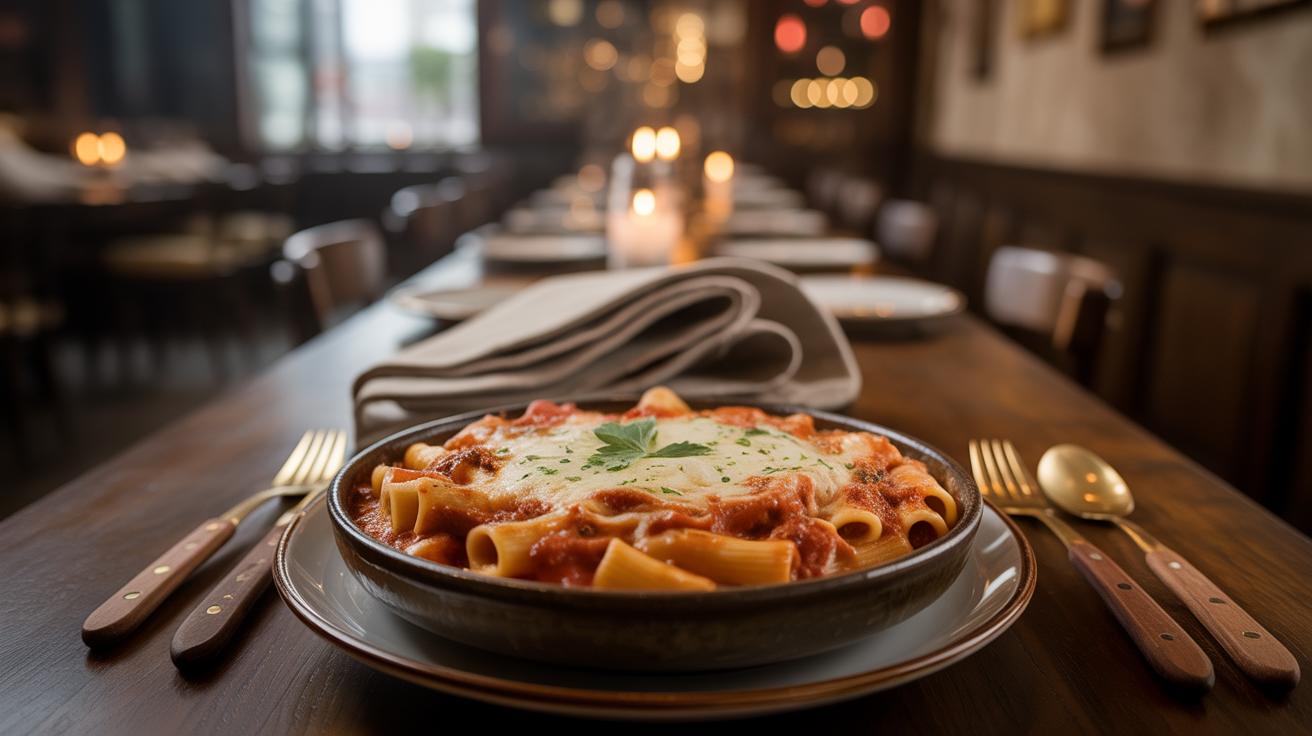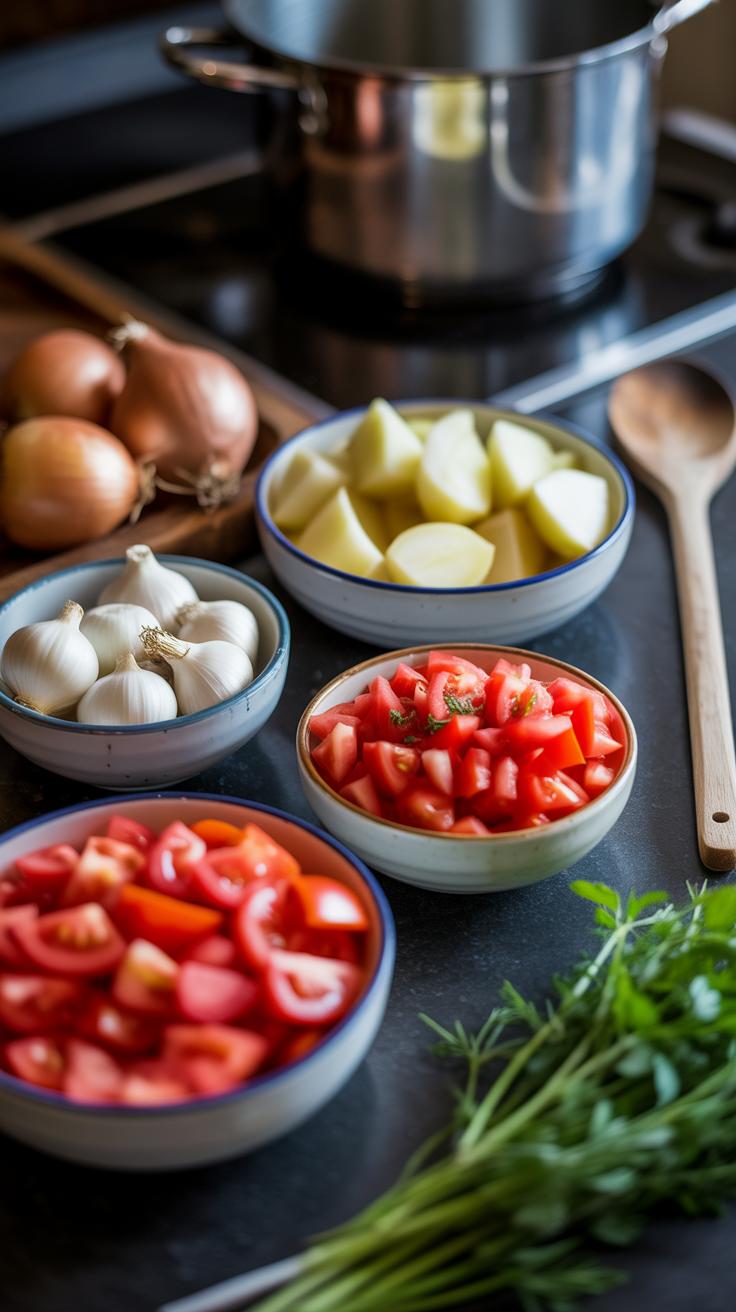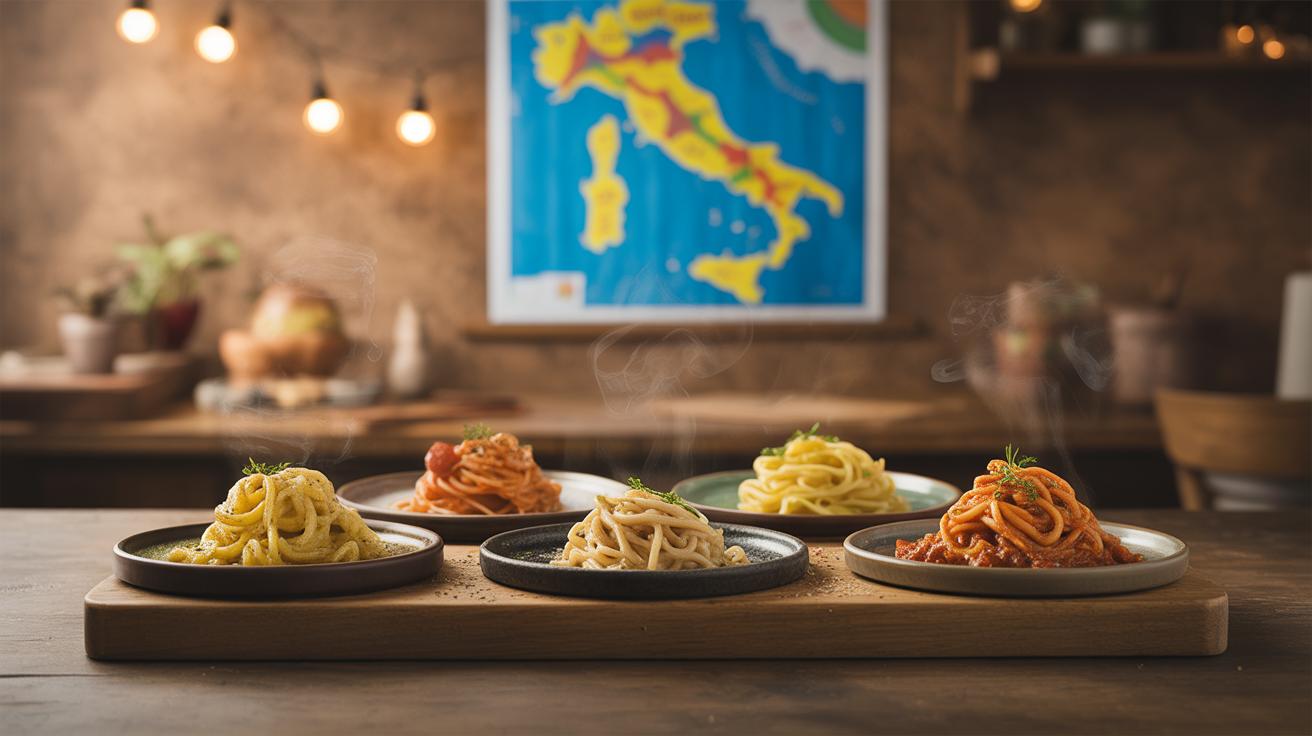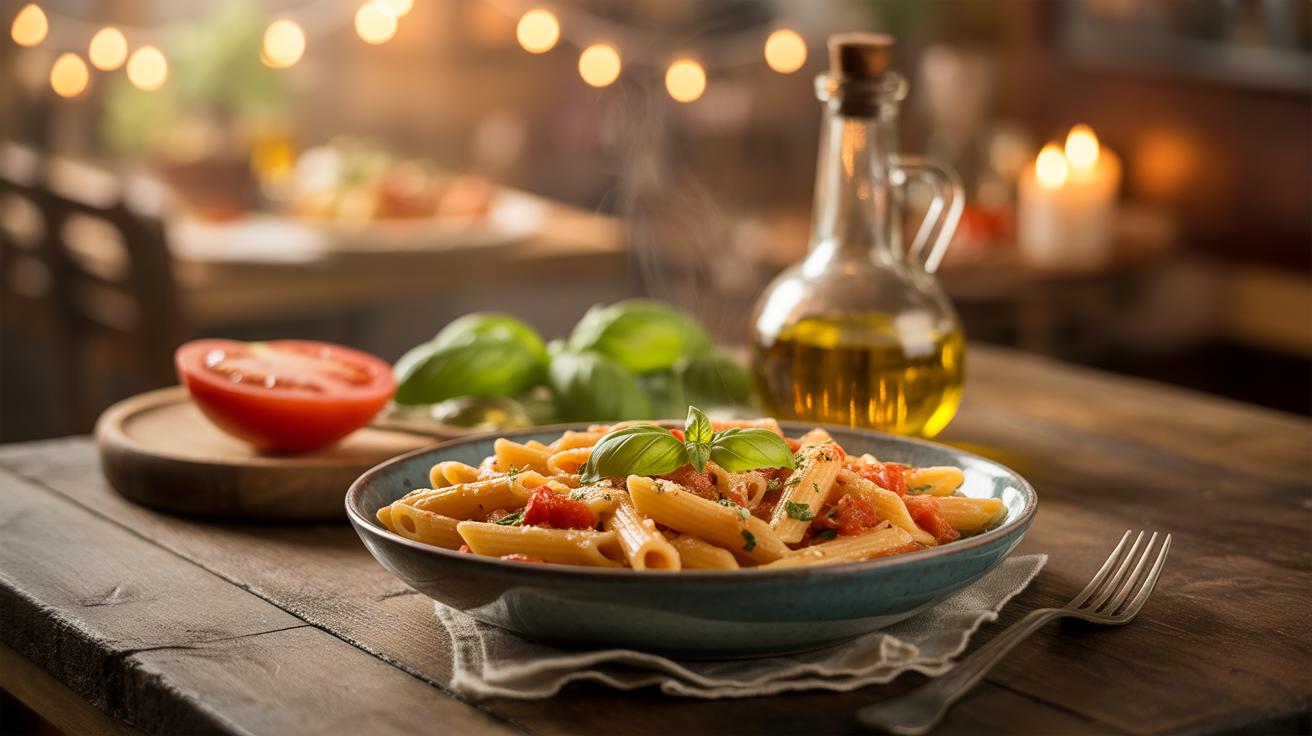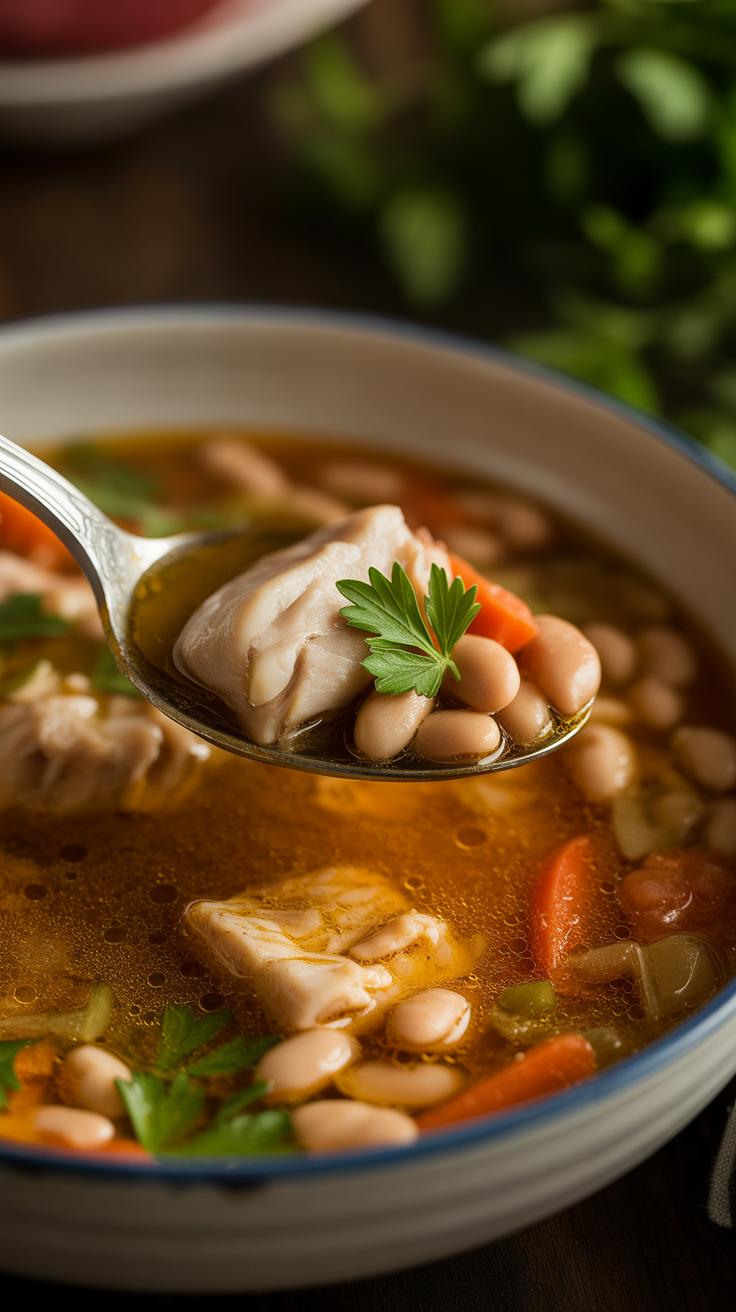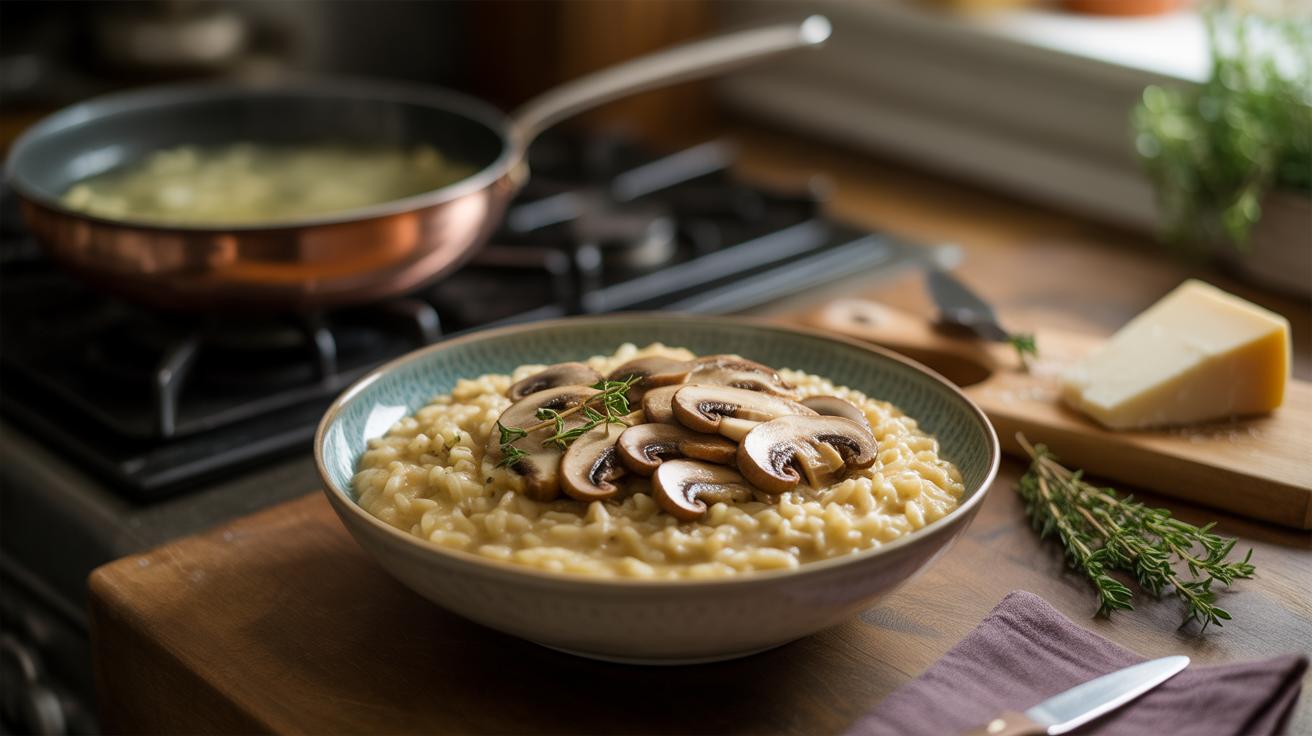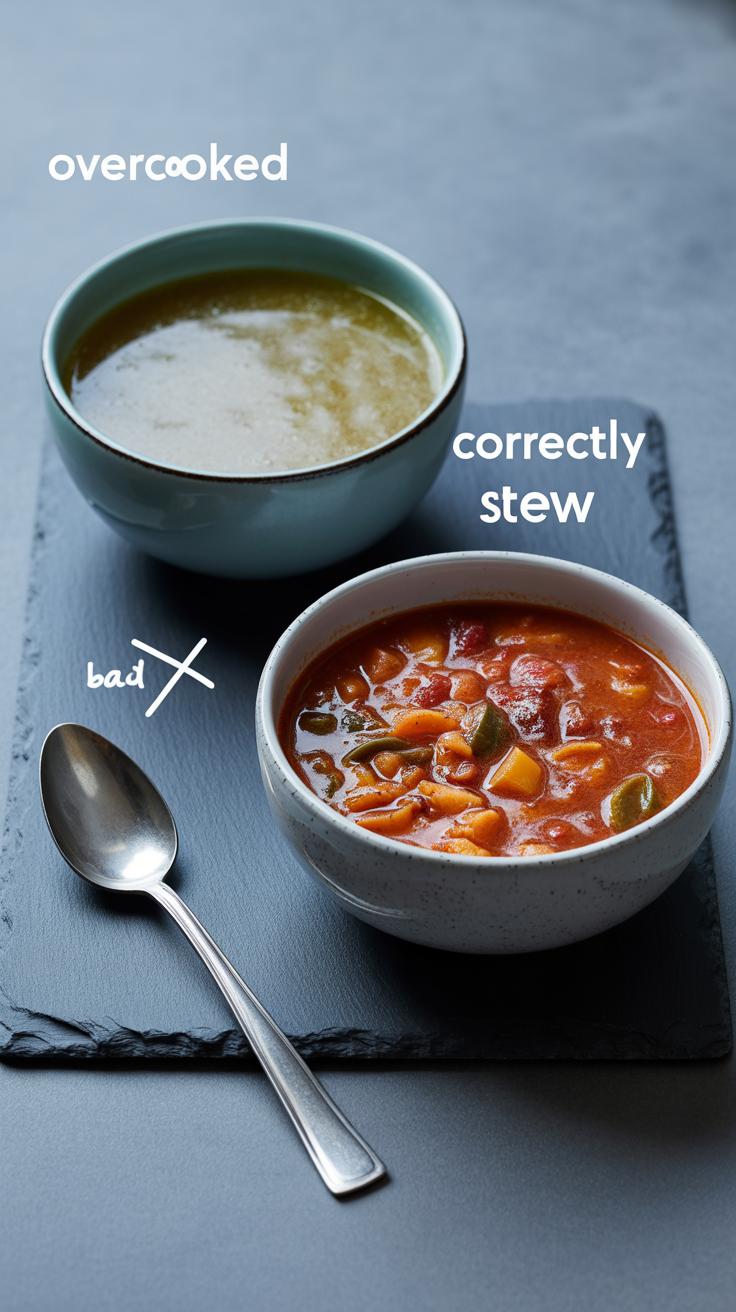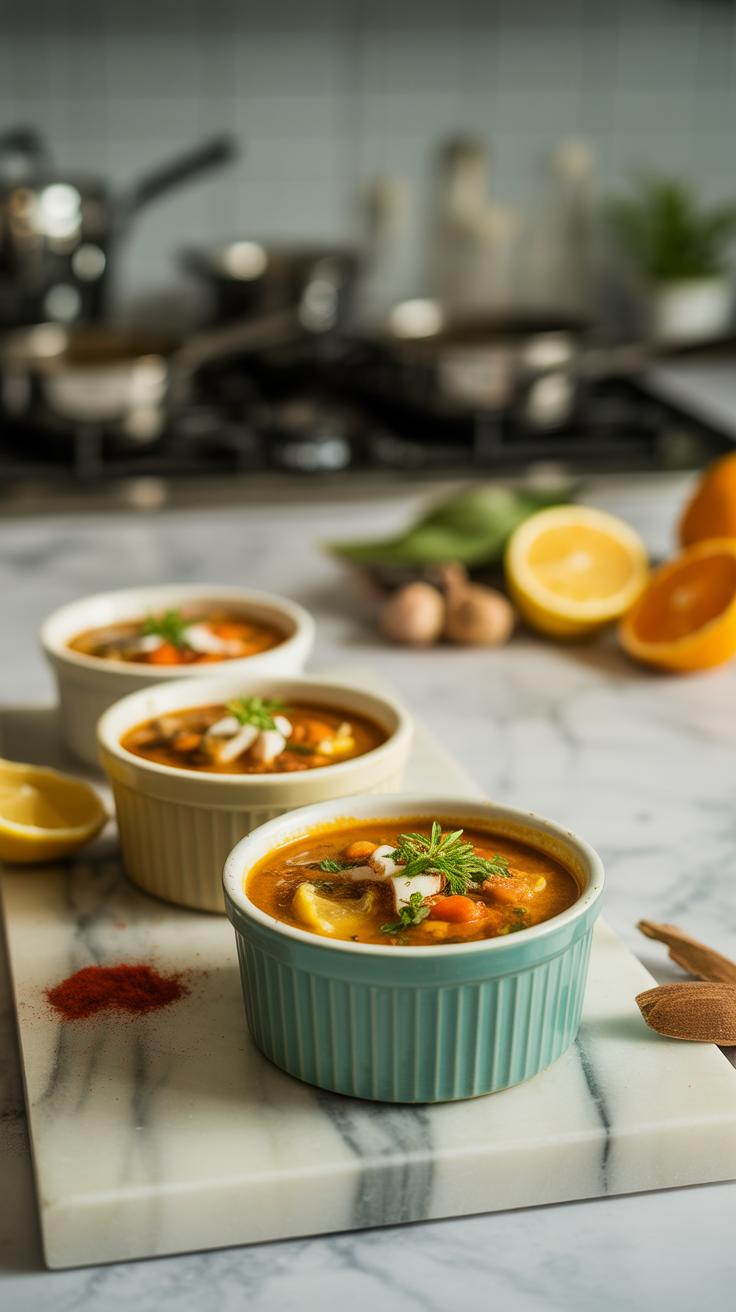Introduction
Fish stews offer a warm and comforting meal that can brighten up your chilly evenings. They combine fresh fish with various ingredients to create flavorful and filling dishes. Different cultures have developed their unique versions of fish stew, each bringing distinctive tastes to the table.
In this article, you will explore popular fish stew recipes from around the world. You will learn about the types of fish to use, essential ingredients, and cooking techniques. Whether you want to try a French bouillabaisse or a spicy Korean maeuntang, you will find recipes and tips that suit your taste and skill level.
What is Fish Stew
Fish stew is basically a dish where fish cooks slowly in a flavorful liquid, usually combined with vegetables, herbs, and spices. It’s not just about boiling fish; it’s about gently simmering it so the flavors meld together, creating something hearty and warming. The fish itself can be fresh or saltwater, but the type of fish often depends on what’s locally available or traditional to the recipe you’re making.
Unlike fish cooked simply by frying or grilling, fish stew offers a more layered taste because everything cooks together in one pot. It’s more forgiving too—fish can easily overcook, but in stew form, it often stays tender and moist. You’ll find that most recipes start with a base like broth, tomato sauce, or coconut milk. Then, other ingredients like onions, garlic, potatoes, or beans join in to round out the dish.
Fish stew isn’t just a single recipe but a variety, each reflecting where it comes from. From the spicy, tomato-rich stews of the Mediterranean to the creamy coconut-based stews of the Caribbean or the smoky, paprika-infused ones of Eastern Europe, the concept stays pretty similar. It’s this adaptability that maybe explains why fish stew is so popular across different continents. Have you ever noticed how many cultures have their own version? That’s the sign of a dish that truly connects people through food.
Popular Fish Stew Varieties
European and American Fish Stews
If you think about classic fish stews, French bouillabaisse often comes to mind first. This dish is a blend of Mediterranean fish, shellfish, tomatoes, garlic, and herbs like fennel and saffron. It feels rich but not heavy, partly because of the aromatic broth. Bouillabaisse has a reputation for being a bit elaborate—multiple fish types, a special broth, and often served with rouille sauce, which is a garlicky mayonnaise. It’s definitely a stew that asks for patience but rewards you with layers of flavor.
Then there’s Italian cacciucco, hailing from Livorno. It’s darker and more intense than bouillabaisse, often using red wine, tomatoes, and a mix of fish and shellfish. What stands out is how rustic and hearty it feels; it doesn’t try to be delicate or refined but embraces robust, bold tastes. It’s the sort of stew that feels like a proper meal, filling and rustic.
On the American West Coast, cioppino is popular. This seafood stew got its start with Italian immigrants but quickly took on local Californian character. Expect Dungeness crab, clams, shrimp, and firm white fish all bubbling in a tomato and wine broth. It’s tangy but not too spicy, pretty straightforward. You might find it comforting and approachable, perfect when you want something familiar yet satisfying.
Asian and Other International Varieties
Switching continents, many Asian fish stews bring something different—usually, bold spices and unique broths. Korea’s maeuntang might surprise you. It’s a fiery fish soup made with fresh fish, chili paste, garlic, and vegetables. It’s spicy, yes, but there’s a fresh brightness from the greens and a clean fish flavor that keeps it lively. Sometimes it blends subtle herbal notes that you might not expect but appreciate.
Indian fish curries are another world entirely. You’ll find them in diverse forms across coastal regions, usually rich with turmeric, cumin, mustard seeds, and coconut milk or tamarind. The spice levels can vary widely—you could get a gently spiced coconut curry or a fierce tamarind punch. There’s something deeply warming in these stews, perfect for cold evenings, though they might seem intimidating if you’re not used to such flavor intensity. But you might find the complexity rewarding, a little taste adventure in every spoonful.
So, when you explore fish stews from around the world, you see they’re not just about fish in broth. They each tell a story of local ingredients, climate, and culture. Some lean towards delicate herbs and wine, others towards punchy spices and heat. Maybe trying a few could help you discover what your chilly night calls for most.
Choosing the Right Fish
Picking the right fish for your stew makes a huge difference in taste and texture. You want fish that holds up well during cooking but doesn’t become rubbery or fall apart completely. Firmer white fish like cod, haddock, or halibut are often great choices because they retain shape without overpowering the dish.
On the other hand, softer fish like sole or flounder might turn to mush, which can be fine if you’re after a thicker broth but not if you want distinct chunks of fish. Flavor matters too. Mild fish let the stew’s other flavors shine, while stronger fish, like mackerel or certain types of salmon, bring their own character—sometimes intensifying the stew in ways you might not expect.
Then, there’s the dilemma of freshwater versus saltwater fish. Each has its quirks and benefits.
Freshwater vs Saltwater Fish
Freshwater fish such as trout, catfish, and perch tend to have a more delicate flavor and softer texture. They cook quickly but can fall apart if you’re not careful. Saltwater fish like snapper, cod, or flounder often offer a firmer, more robust flesh that stands up to longer cooking times and richer broths.
Sometimes, you feel like the subtlety of freshwater fish suits a light stew better, while saltwater fish pairs nicely with heartier, spicier recipes. But isn’t that just personal preference at play? I often switch between the two depending on mood and recipe, never sticking strictly to one.
Sustainable Fish Choices
Choosing fish responsibly matters more than we sometimes admit. Overfishing and habitat damage threaten fish populations and our future dinners. Looking for certified sustainable labels—like those from the Marine Stewardship Council—helps guide you toward options that are caught or farmed in ways that protect ecosystems.
Wild-caught Alaskan salmon, farmed mussels, or Atlantic mackerel often show up as sustainable picks. But it can get confusing. Sometimes, a farmed fish might be more resource-intensive than a wild-caught one, depending on local practices. Still, trying to buy from sources known for good stewardship makes your stew choices part of a larger, positive impact.
Have you ever thought about where your fish comes from beyond the market shelf? It’s something I try to consider more, even if it means hunting a bit harder for the right fish at times. It’s not always easy, but it can be rewarding in flavor and conscience.
Key Ingredients in Fish Stew
Vegetables and Herbs
Vegetables play a central role in shaping the character of a fish stew. Common choices often include onions, celery, and carrots, forming a simple aromatic base that brings subtle sweetness and body. Tomatoes, fresh or canned, add acidity and color—sometimes they’re almost necessary to balance the richness of the fish.
Potatoes show up in many recipes too, offering a hearty texture that contrasts well with delicate fish flesh. Bell peppers and fennel occasionally appear, introducing brightness or a slight anise-like note. Leafy greens like kale or spinach can deepen the stew’s nutrition, though, be careful—they tend to wilt quickly and change the texture.
As for herbs, parsley is almost always present, fresh and bright. Bay leaves bring a quiet earthiness, while thyme or dill can lend a more distinct personality. I find that fresh herbs, added near the end, keep the flavors lively, but dried ones work if you want the flavors simmered in for longer.
Broth and Seasonings
The broth or liquid you choose sets the stew’s tone. Clear fish stock is the classic go-to—it highlights the seafood without overshadowing it. Yet, some prefer a light vegetable stock or even a shellfish broth for greater depth. Occasionally, recipes use water, but the stew loses complexity unless you add other strong seasonings.
Seasonings generally include salt and pepper, but often you’ll find garlic and a bit of chili for warmth. Paprika—smoked or sweet—can add a subtle punch, while saffron, when available, introduces a unique and delicate flavor that I think elevates the stew almost magically.
Don’t overlook acids like lemon juice or a splash of vinegar. They brighten the broth and cut through any heaviness. Wine or even a bit of tomato paste can enhance umami and tie the whole dish together.
Choosing ingredients beyond the fish itself boils down to striking a balance—vegetables and broth create body and flavor, herbs and spices provide lift and character. The question is, what flavor story do you want your stew to tell?
Essential Cooking Techniques
Preparing Ingredients Properly
Before the stew even touches the pot, preparing your ingredients right makes all the difference. Fish, for example, should be rinsed gently and patted dry to keep the stew from turning watery. Some cooks prefer to lightly season or marinate the fish—just a touch of salt and perhaps a squeeze of lemon—which can deepen the flavor without overpowering the natural taste.
Other ingredients like onions, garlic, and tomatoes benefit from a bit of pre-cooking too. Sweating onions until translucent unlocks their sweetness, creating a better base. I find that sautéing spices early helps release their aroma, layering the stew with subtle complexity. It might seem like extra steps, but they build flavors that meld together nicely once the stew simmers.
Simmering and Timing
Simmering is almost an art in itself. Fish stew shouldn’t boil vigorously. Low, steady heat allows flavors to come together gradually without toughening the fish. It’s tempting to rush, but patience here pays off.
The timing is tricky. Fish cooks quickly—overdo it, and you end up with rubbery chunks. A good rule is to add fish toward the end, letting it gently poach in the warm broth for just a few minutes. Meanwhile, root vegetables or tougher ingredients need more time to soften, so they often start simmering earlier. Watching the clock closely and adjusting heat as you go turns a good stew into one worth savoring.
Tips for Making Your Fish Stew Hearty
Making a fish stew truly filling is about more than just throwing fish into a pot. You want a meal that leaves you satisfied beyond just the first bite. That often means thinking about portion sizes—don’t skimp on the fish or the other ingredients, especially if you’re feeding a hungry crowd. Adding a good amount of fish chunks can make the stew feel substantial, but pairing those with complementary ingredients really seals the deal.
Adding Starches and Proteins
Potatoes are a classic choice for a reason. They absorb flavors while providing substance. Diced or sliced, they bulk up the stew without overpowering the fish. Beans, such as white beans or chickpeas, bring both texture and protein, making the meal heartier and more balanced. Sometimes, I toss in some smoked sausage or even hardier shellfish for extra depth—different proteins can shift the stew’s character, so consider your flavor goals before adding them.
Using Rich Broths and Sauces
A rich broth or sauce forms the stew’s backbone. Starting with a flavorful fish stock, or even a mix of seafood and vegetable stock, provides a deeper taste. Don’t hesitate to stir in a splash of cream or use tomato paste to thicken and enrich the liquid. Slow cooking can help these flavors meld and amplify, though you have to watch the fish so it doesn’t overcook. Thickening with a puree of some of the starches or blending part of your beans also lends body. You’re basically aiming for more than thin soup—something that feels like a real meal in a bowl.
At the end of the day, crafting a hearty fish stew means balancing ingredients that fill without overwhelming the delicate flavors of the fish. It is a bit of give and take, experiment and taste. Do you prefer a stew that’s closer to a stew or more like a chunky soup? That choice might change how you build it.
Serving and Pairing Fish Stew
Serving Suggestions
When it comes to serving fish stew, think about warmth and comfort first. Deep bowls work best, letting the rich broth stay hot longer while inviting your guests to sink their spoons in. You might want to serve moderate portions—fish stew can be quite filling, so a generous ladle with a bit of broth usually does the trick. But don’t hesitate to offer seconds if your stew has been simmering patiently and developed great flavor.
Presentation doesn’t need to be fancy, but a sprinkle of fresh herbs—like parsley or dill—on top can brighten things up visually and add a fresh note. Some folks like a dash of lemon zest or a drizzle of good olive oil, especially if your stew is on the rustic side. Sometimes simple is better, though. A well-crafted stew can stand on its own, just waiting for a chunk of bread to soak up every last bit.
Side Dishes and Drinks
The right sides coax the best from your stew, and choices vary depending on what kind of stew you’ve made. For creamy, tomato-based stews, crusty bread like a baguette or sourdough usually hits the spot—you’ll want something hearty enough to hold up to the broth’s richness. If your stew is lighter or more broth-focused, a crisp green salad with a tangy vinaigrette can cut through the flavors well.
Rice or boiled potatoes can also work, especially if the stew is thick and chunky. They soak up the juices and add extra substance without overwhelming the fish.
As for drinks, white wine is a common companion. Try a dry white like Sauvignon Blanc or a unoaked Chardonnay—they often bring out delicate flavors without masking the fish. But sometimes, especially with spice-forward stews, a light beer or even sparkling water with lemon might be just right. Don’t be afraid to experiment a little; your beverage can shift the whole experience in subtle ways.
Common Mistakes to Avoid
Overcooking the Fish
One of the biggest pitfalls when making fish stew is overcooking the fish. When pushed too long on the heat, fish quickly turns dry, tough, and loses its delicate texture. You might think simmering longer helps flavors meld better, but with fish, that patience can backfire. The trick is to add the fish towards the end of cooking, just enough to let it become opaque and flake gently. Keep a close eye on it. Cooking times vary depending on the thickness and type of fish. For example, firm white fish needs slightly more time than something flaky like sole or cod. But generally, 5 to 10 minutes in a simmering stew is plenty. If you’re unsure, it’s better to undercook just a bit, since it will continue cooking slightly in the hot broth after you remove it from the stove. Trusting your instincts here really helps—you can’t fully rely on timers every time.
Balancing Flavors
Getting the seasoning right in a fish stew can be tricky. Adding too much salt early on feels like a quick fix but often results in an overly salty stew once it reduces. You don’t want to mask the subtle ocean flavors with too much salt or an aggressive spice blend. Start with less. Taste as it cooks and adjust gradually. Also, spices—while essential—shouldn’t dominate. A stew packed with overpowering spices can overwhelm the fish and other ingredients, making the dish feel unbalanced. It’s better to use mild, complementary herbs like thyme, bay leaf, or parsley. Sometimes, less is more. You might think bold flavors are necessary for a winter stew, but a restrained approach often highlights the fish better. Have you ever noticed how a pinch of acidity, like a splash of lemon juice or vinegar, can brighten the whole pot without adding salt? That can help balance and elevate flavors too.
Explore and Experiment with Fish Stews
Fish stew offers a canvas for endless creativity. You don’t have to stick with one recipe. Think about trying different combinations that suit you — maybe you’ve always used cod, but what about mixing it up with some salmon or even shellfish? Each fish brings a new texture and taste to the pot.
Consider adding herbs like dill, tarragon, or basil instead of the usual parsley. Spices can be just as playful — a pinch of smoked paprika could shift the stew’s character entirely, or a hint of saffron might lend an aromatic twist.
It’s okay if you’re unsure where to start. Try small tweaks first. Swap one fish or herb, and see what happens. Sometimes, unexpected blends surprise you — they might not be perfect the first time, but that’s part of the fun.
- Mix firm white fish with oily or delicate ones for varied mouthfeel.
- Experiment with fresh versus dried herbs; their intensity differs a lot.
- Adjust the broth—try tomato-based, coconut milk, or simple fish stock for different moods.
- Think about your diet — lower salt, no cream, or gluten-free options are easy to tailor.
- Add vegetables you enjoy, whether it’s something classic like potatoes or something less common like fennel.
Don’t feel tied down by strict guidelines. Your kitchen is a place to explore, and every batch of stew you make teaches you something new. What flavors are calling to you tonight? Maybe you’ll discover a combination you like better than any recipe you’ve tried before.
Conclusions
Hearty fish stews provide both nourishment and warmth, making them ideal for cold evenings. By experimenting with different recipes and ingredients, you can enjoy a variety of flavors and textures from the comfort of your home. Using fresh fish and complementary ingredients ensures a tasty and healthy meal.
Preparing fish stews can be a simple and rewarding experience. With the knowledge of the key elements and techniques explained here, you are ready to create your own delicious fish stews. Enjoy the cooking process and savor every bite of these comforting dishes.

